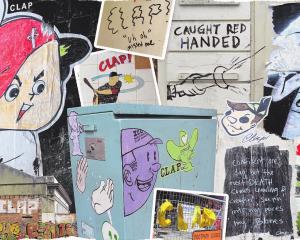Retired University of Otago neuroscientist and former Nasa robotics engineer Dr Mike Paulin was at Ravensbourne School yesterday, teaching pupils how to turn a humble toothbrush into a robot that can move under its own power.
First, they cut the handle off the toothbrush. Then they put a cellphone vibrator motor on top with a capacitor that stores electricity.
"And when it runs, the vibrator motor makes it buzz and it bounces on the bristles and that makes it jiggle forward like a bug."
Dr Paulin said yesterday’s exercise was the start of his project which aimed to develop a robotics education programme for children as young as 7.
"This is our first time at Ravensbourne School and we’re just trying to figure out what works and what information you can get across to a 7, 8 or 9-year-old kid.
"It’s a project we’re looking to expand on at other schools."

He said schools could buy pre-made, programmable robots that cost thousands of dollars, but his robots only cost about $3 to make.
"It’s that cheap that kids can make their own and take them home. We can just give them away."
Eventually, he hoped to expand it to secondary school-level, where pupils would be able to make more sophisticated robots.
"By the time kids get to high school, they can start making programmable ones and steerable ones with computers on them.
"This is a great way to start getting kids interested in science and learning about electricity, motors, mathematics and physics."
Dr Paulin said hypothetically, the toothbrush robots could be stored under a kitchen refrigerator, and when there was no-one around, they could come out and sweep the floor.
"And when they hear someone coming, they could scuttle back under the fridge.
"Some of them, you can put in a maze, and they will find their way out.
"They could do all kinds of things."
Despite their potential, he was not yet convinced they could "rise up" and take over the world.
But judging by the buzz of excitement, engagement and inventive additions pupils were making to the basic design yesterday, who knows?








